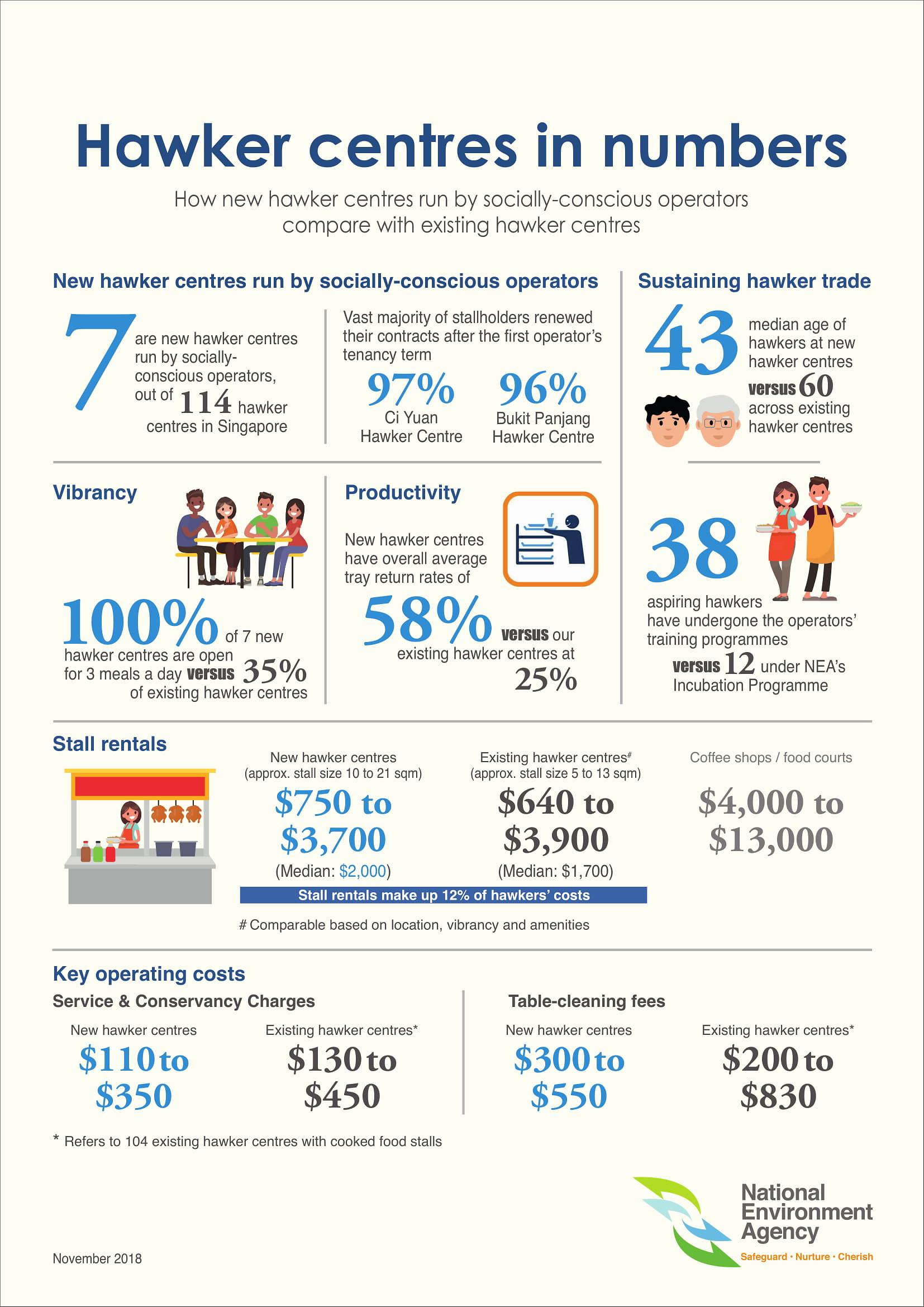SINGAPORE: Despite some challenges with implementation, the socially-conscious enterprise hawker centre (SEHC) model is “generally sound” and the Government should let market mechanisms work instead of mandating low rents, Environment and Water Resources Minister Masagos Zulkifli told Parliament on Monday (Nov 19).
“Food prices are kept affordable with a good variety of high-quality options, and the majority of hawkers are doing well at the SEHCs,” he said. “We should not undo these achievements.”
Mr Masagos was responding to a barrage of 19 questions tabled by several Members of Parliament on the SEHCs, including the challenges hawkers under this model face and how the ministry is addressing them.
SEHCs have been in the spotlight after it emerged that hawkers there faced issues with additional operating costs like dishwashing, tray-return and consultancy fees.
READ: Alternative social enterprise hawker management model still being evaluated: Amy Khor
Mr Masagos said the SEHCs need time to establish themselves, as he asked for patience for the model to “adapt, adjust and optimise” the outcomes it seeks to achieve.
These include ensuring there are affordable food options, providing a decent living for hawkers and preserving hawker centres as vibrant social spaces.
He highlighted how SEHCs, first established in 2015, have attracted new entrants to sustain the hawker trade.
The median age of hawkers at the seven SEHCs is 43 years old, “significantly lower” than the median age of 60 in the other 107 NEA-run hawker centres, he said.
READ: NEA suggests changes to contract terms between social enterprises, hawkers
He added that they are leading a new model of “clean and productive hawker centres” by implementing measures like centralised dishwashing to reduce the amount of menial work for the hawkers.
“Taken together, these initiatives reduce the physical burden of being a hawker, and can go a long way to help sustain our hawker trade,” he said.
In addition, food prices at SEHCs are comparable to existing hawker centres and are generally lower than prices at surrounding coffee shops and food courts.
MARKET MECHANISMS WORKING
“The market mechanism is working, and Government should not intervene unnecessarily in mandating low or no rental, which could otherwise affect fair competition,” Mr Masagos said.
“It is natural to have some level of churn as better hawkers replace those who are less suited for the trade. Market forces would lead to a fair distribution of hawker stalls, which ultimately benefits residents.”
READ: Model of social enterprise hawker centres needs to be tweaked to benefit all involved: Elim Chew
Mr Masagos said it is inappropriate for the Government to subsidise a hawker on the basis that business is poor, as this would be unfair to a better performing hawker who thrives on healthy competition and other private sector food shop operators located nearby.
“The model must, therefore, ensure that rentals and costs are transparent and fair to hawkers, but cannot subsidise hawkers to the extent that it distorts the workings of the market,” he added.
“We have heard the feedback, and will adjust the model to better serve Singaporeans. As with any trials and experiments, we cannot always get it right the first time.”
READ: Grumbling and rumbling at social enterprise hawker centres — what’s the rub?
MORE OVERSIGHT BY NEA TO SAFEGUARD HAWKERS’ WELL-BEING: SMS AMY KHOR
Likewise, Senior Minister of State for the Environment and Water Resources Amy Khor said that it is “difficult” to get the SEHC model right from the start, and that the National Environment Agency (NEA) will continue its stock-take of the model.
She added that amid the stock-take, NEA will rebalance its soft-touch regulatory approach and exercise greater oversight to safeguard hawkers’ well-being.
“So we set some key parameters, let the market work, and when we get feedback or issues are raised, we will move to address them swiftly and decisively, as we have done in the past month or so,” Dr Khor said.
The regulatory body will also look at the selection criteria for operators, what to leave to market forces and whether any safeguards should be prescribed, such as those announced in November to standardise four key terms in contracts between operators and hawkers.
READ: NEA suggests changes to contract terms between social enterprises, hawkers
Dr Khor also provided figures on the rents and operational costs faced by hawkers at SEHCs.
She clarified that the median rental of stalls in SEHCs is about S$2,000 per month and not S$4,000 as some media reports have said.
The median rent for stalls in existing hawker centres is S$1,700 per month, which is “comparable to those of the new centres after accounting for the larger stall size, better-designed stalls and amenities at the new centres”, she said.
“They are nowhere near the rentals at these private F&B outlets, which can range from S$4,000 to S$13,000 a month, before other operating costs,” she said, adding that NEA has put in place measures to ensure that rentals are “fair and not speculative”.

How new hawker centres run by socially-conscious operators compare with existing hawker centres. (Infographic: NEA)
On operating costs, hawkers at SEHCs pay between S$100 and S$350 a month, similar to the S$130 to S$450 paid at existing centres. Similarly, table-cleaning services at SEHCs are between S$300 and S$550 a month, within the range of S$200 to S$830 a month at existing hawker centres.
READ: Dishwashing subsidy extended to stallholders at new hawker centres: NEA
Dr Khor added that NEA will continue to support stallholders at SEHCs in managing costs, such as through the extension of the Productive Hawker Centre grant to these hawkers.
“We will continue to make adjustments and recalibrate the SEHC model to ensure that it continues to achieve the key social outcomes of our hawker centres, which are to provide affordable food in a clean environment, allow hawkers to make a decent living, and build communities,” Dr Khor said.





